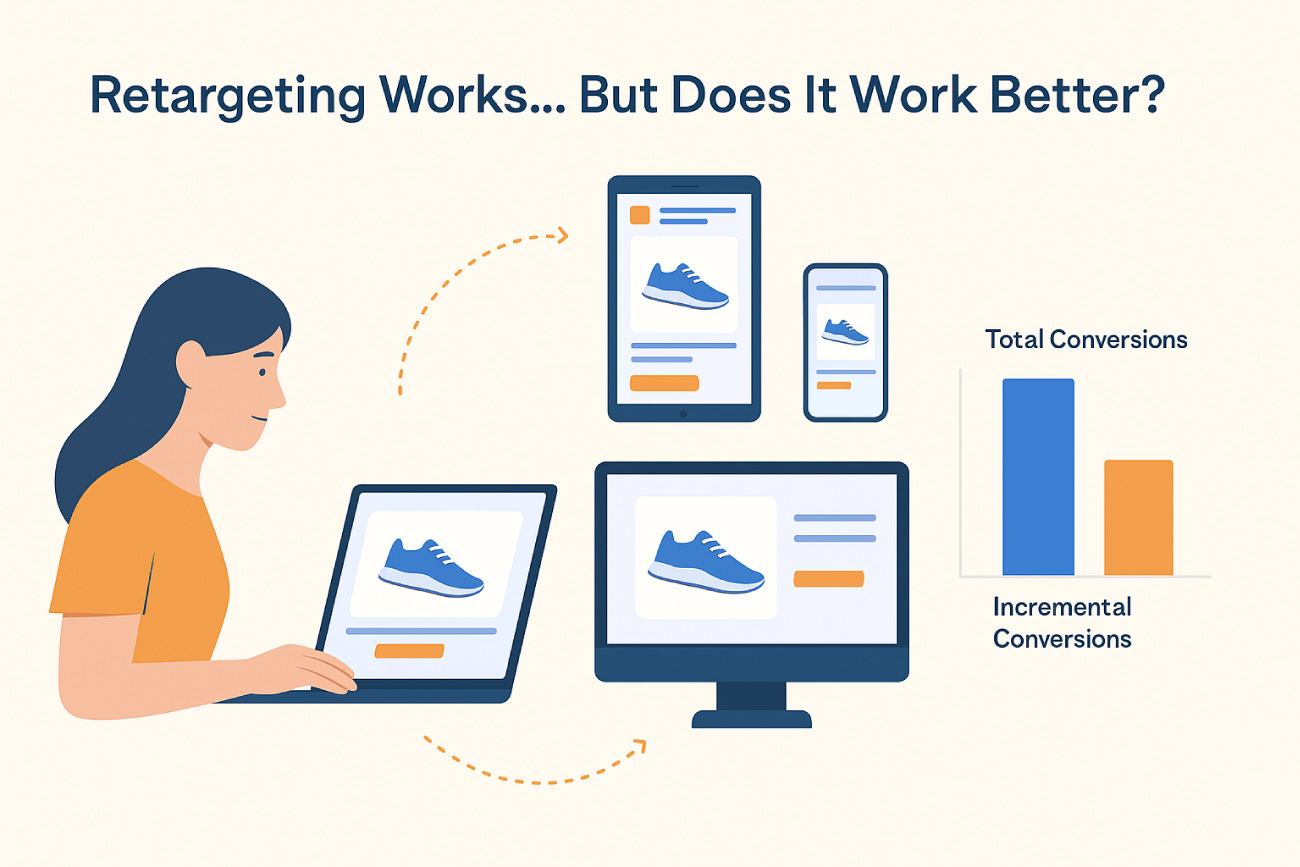Solutions
Teams
Built for your whole team.
Industries
Trusted by all verticals.
Mediums
Measure any type of ad spend
Platform
Use Cases
Many Possibilities. One Platform.
AI and Automation
The Always-on Incrementality Platform
Teams
Built for your whole team.
Industries
Trusted by all verticals.
Mediums
Measure any type of ad spend
Use Cases
Many Possibilities. One Platform.
AI and Automation
The Always-on Incrementality Platform

Ever browsed for a product online only to see ads for it following you everywhere? That’s retargeting. It’s one of the most common digital marketing tactics around, and while it looks like it works, measuring its actual contribution is a different story.
Let’s unpack what is retargeting, the types of retargeting campaigns, and how to figure out if they’re truly making a difference.
Retargeting is the practice of showing ads to people who have previously interacted with your brand. This could be someone who visited a product page, abandoned a shopping cart, or simply landed on your homepage.
So what is retargeting in advertising? It’s a way to keep your brand in front of people who showed interest but didn’t convert. The idea is that a second or third exposure might move them closer to taking action.
Retargeting is often credited for high conversion rates, but those numbers can be misleading. Many users would have converted anyway. That’s why separating correlation from causation matters.

Retargeting ads appear across websites, apps, and social platforms. They aim to re-engage users with personalized messages or reminders based on their past behavior.
There are two main types:
Pixel-Based Retargeting
This approach uses tracking pixels or cookies to identify users after they visit your site. These users are then served ads on platforms like Google, Meta, or display networks. It’s commonly used for showcasing products users viewed but didn’t buy.
List-Based Retargeting
This method involves uploading customer data (like email addresses) to advertising platforms. The platforms then match those contacts with users and deliver ads to them. It’s useful for reconnecting with past customers or email subscribers.
Both approaches are widespread, but not all retargeting ads are effective. Knowing how to assess performance is just as important as running the campaigns.
A retargeting campaign is a structured ad strategy designed to bring back users who dropped off somewhere in their journey. These campaigns vary based on audience segments:
• Viewed a product but didn’t buy
• Abandoned cart
• Past purchasers (for upselling)
• Repeat site visitors with no conversions
The campaign’s success depends on the timing, creative, and context. Just serving more impressions doesn't guarantee better results.
In the broader picture, what is retargeting in digital marketing? It’s one piece of a larger effort to optimize the user journey and improve conversion rates. Retargeting fits into funnel strategies where timing and message relevance can nudge users forward.
That said, it shouldn’t be viewed as a magic bullet. It’s one of many tactics, and its value depends on how it's measured.

Measuring conversions alone won’t tell you if retargeting worked. Many people click on ads for things they were going to buy anyway.
To understand whether a retargeting ad caused a conversion, you need to measure incrementality - in other words, what lift did the campaign actually drive?
Here’s how to approach it:
• Don’t rely on last-click attribution. It overcredits retargeting by default.
• Use models that isolate the effect of retargeting from other influences.
• Factor in external variables like seasonality, pricing changes, and channel overlap.
• Focus on conversions that wouldn’t have happened without the ad.
• Go beyond surface-level ad metrics like clicks and impressions—look at which actions were actually influenced by the campaign.
Tools that offer incremental measurement without audience splits or experiments can help marketers evaluate effectiveness in real time. Not every conversion counts. Knowing which ones matter is what leads to better decisions.
To interpret and act on this data, working with a marketing data analyst can make a difference. They can connect performance signals to real business goals.
Want practical examples of how this works? These actionable insights highlight common cases where retargeting looked successful on the surface but didn’t move the needle when measured properly.
For a deeper dive into incrementality methods, check out this guide.